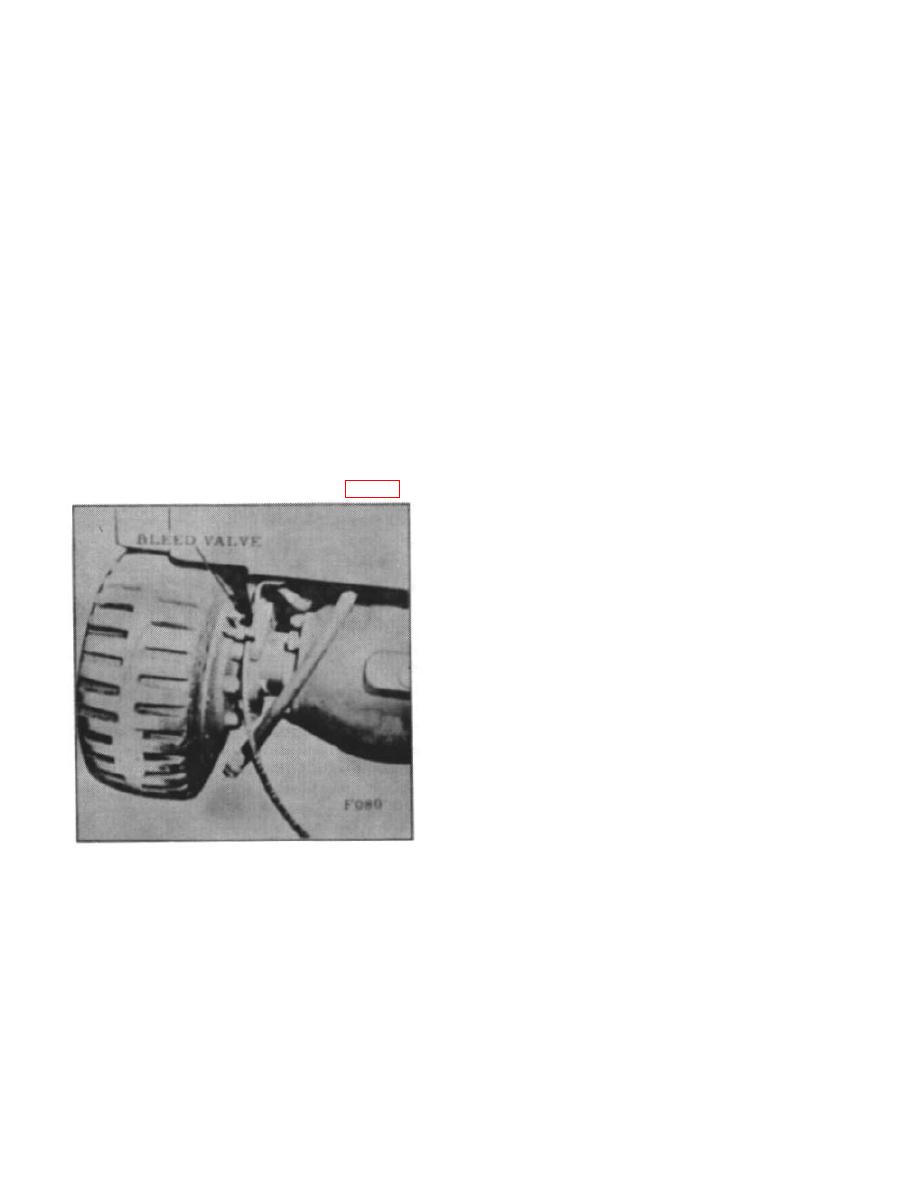 |
|||
|
|
|||
|
|
|||
| ||||||||||
|
|
 BRAKES
B. BLEEDING - COMPLETE SYSTEM
3. Partially fill a clean glass container with clean
brake fluid. Place the free end of the bleeder hose
below the surface of the fluid in the container.
1. Make sure the entire working area around the
master cylinder is clean, then remove the filler cap.
Inspect brake fluid for discoloration, foreign particles,
4. If the pressure bleeder has been attached:
viscous fluid, and sludge. If unnatural conditions exist,
the system must be flushed. If foreign particles are
First open the pressure valve on the bleeder and then
found, the entire system must be checked. Using the
the bleed valve on the wheel cylinder. Permit fluid to
"process of elimination" method, start at the master
flow from the system until it flows clean and free of air
cylinder and work toward the wheel cylinder farthest
bubbles. Close the bleed valve on the wheel cylinder
from the master cylinder. Open the first connection and
and remove bleeder hose.
check the fluid that drains from it. If the particles are
still present, repeat the process on the next connection.
5. If pressure bleeder is not available:
Repeat checking until the wheel cylinders are reached,
If particles are still present, both wheel cylinders should
After making sure the master cylinder is full, open the
be inspected, and repaired as necessary.
wheel cylinder bleed valve; operate the brake pedal,
allowing it to move slowly from one extreme to the other
2. Check brake fluid level and air pressure in the
until the fluid worked from the system is clean and free
pressure bleeder; then attach bleeder to the master
of air bubbles. Watch the fluid level in the master
cylinder. (Do not open the valve on the bleeder at this
cylinder and keep sufficient fluid in the reservoir to
time.) Affix bleeder hose to the bleed valve on the wheel
eliminate the possibility of air being pumped into the
cylinder farthest from the master cylinder. (Fig. 15)
system.
6. Check the pressure in the pressure bleeder or
fluid level in the master cylinder if bleeder is not being
used. Clean the glass container and repeat the bleeding
process on the other wheel.
NOTE: In order to detect any foreign materials that may
be in the cylinder being bled, the glass container must
be clean at the beginning of the bleeding process.
C. PARTIAL BLEEDING
1. To bleed an individual wheel, follow the
procedure given for bleeding the complete system, but
bleed air from only the cylinder being serviced.
2. To bleed the master cylinder, connect pressure
bleeder to the master cylinder, then open pressure valve
and loosen the hydraulic
Figure 15.
B-137
|
|
Privacy Statement - Press Release - Copyright Information. - Contact Us |